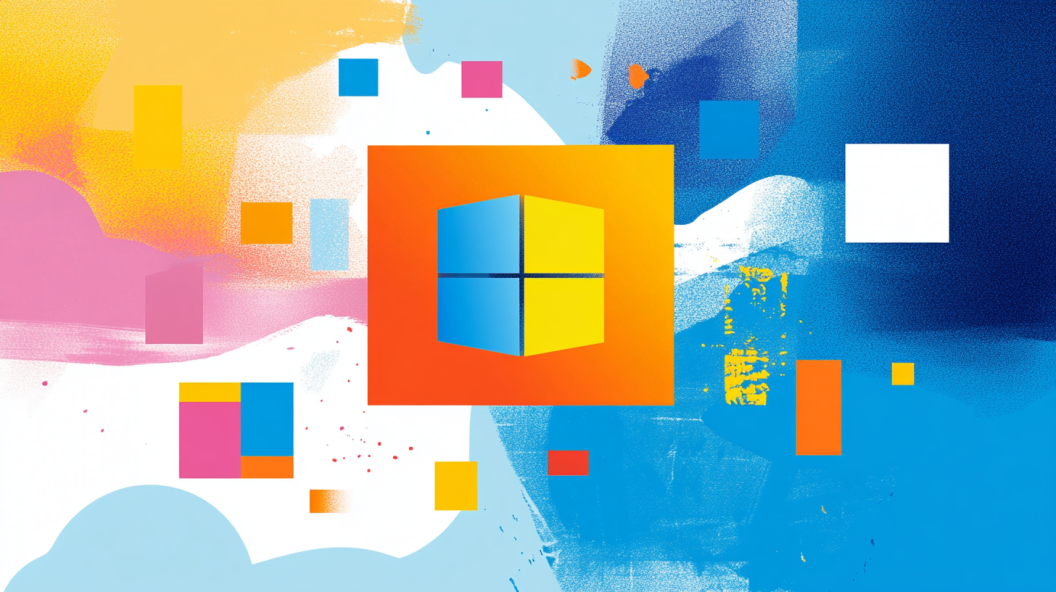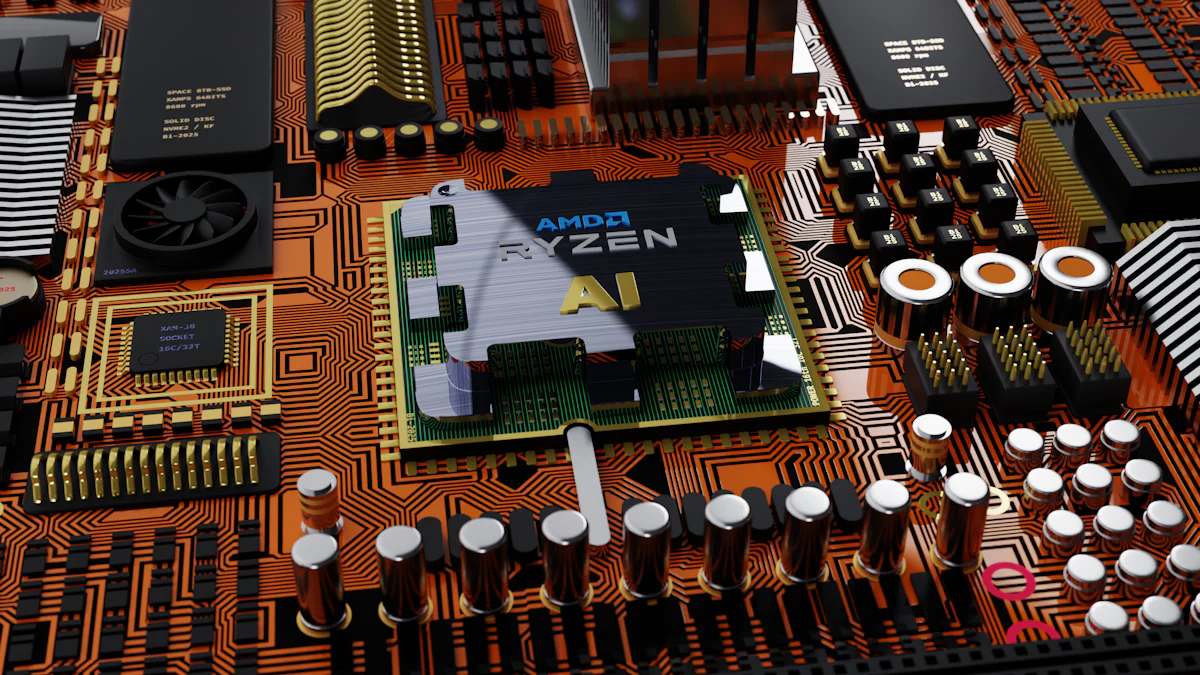How Microsoft is Advancing Natural Language Processing

Microsoft stands as a leader in technology, shaping the future with innovative solutions. Natural Language Processing (NLP) plays a crucial role in today's digital landscape, enhancing communication between humans and machines. Microsoft is advancing NLP through its AI-powered tools, which empower billions of intelligent experiences daily. With Azure AI, used by over 85% of Fortune 100 companies, Microsoft continues to drive progress in this field. Their dedication ensures that businesses and individuals benefit from cutting-edge language technologies.
Understanding Microsoft's NLP Technologies
Overview of Microsoft's NLP Tools
Microsoft offers a range of tools that enhance Natural Language Processing capabilities. These tools empower developers to create intelligent applications that understand and process human language effectively.
Microsoft Azure Cognitive Services
Azure Cognitive Services provides a comprehensive suite of APIs and SDKs. These tools enable developers to integrate advanced language capabilities into their applications. With features like sentiment analysis, key phrase extraction, and document categorization, Azure Cognitive Services revolutionizes how applications interact with users. Developers can easily implement custom NLP solutions using Spark NLP for tasks such as topic detection and sentiment analysis.
Microsoft Bot Framework
The Microsoft Bot Framework allows developers to build conversational interfaces for various scenarios. This framework supports the creation of chatbots that can engage users in meaningful conversations. By integrating with other Microsoft services like LUIS and QnA Maker, developers can enhance their bots' capabilities. The Bot Framework provides a robust environment for developing enterprise-grade conversational bots, making it a valuable tool for businesses across industries.
Key Features and Capabilities
Microsoft's NLP technologies offer several key features that enhance the development of intelligent applications.
Language Understanding (LUIS)
Language Understanding (LUIS) is a powerful tool that enables applications to understand user intents and extract relevant information. Developers can create and train LUIS models to recognize specific intents and entities within user input. This capability allows applications to respond accurately to user queries, improving the overall user experience. LUIS integrates seamlessly with the Microsoft Bot Framework, enabling developers to build intelligent conversational interfaces.
Text Analytics API
The Text Analytics API is an Azure AI service that provides advanced text mining and analysis capabilities. This API enables applications to perform tasks such as sentiment analysis, language detection, and key phrase extraction. With multilingual capabilities, the Text Analytics API can process text in various languages, making it a versatile tool for global applications. By extracting insights from text data, businesses can gain valuable information about customer feedback and social media trends.
Microsoft's NLP technologies, including Azure Cognitive Services and the Bot Framework, offer powerful tools for developers. These tools enable the creation of intelligent applications that understand and process human language effectively. With features like LUIS and the Text Analytics API, Microsoft continues to advance the field of Natural Language Processing, providing valuable solutions for businesses and developers worldwide.
How Microsoft is Advancing NLP with Azure

Microsoft Advancing Natural Language Processing (NLP) through Azure provides developers with robust tools to create intelligent applications. Azure's capabilities simplify the process of setting up and implementing NLP projects, making it accessible for businesses and developers alike.
Setting Up Azure for NLP Projects
To begin leveraging Azure for NLP, developers must first set up their environment.
Creating an Azure Account
Visit the Azure Portal: Navigate to the official Azure website.
Sign Up: Click on the "Start free" button to create a new account. Microsoft offers a free tier with credits for new users.
Provide Details: Fill in the required information, including personal and payment details. This step ensures access to Azure's comprehensive services.
Verify Identity: Complete the verification process via phone or email to activate the account.
Creating an Azure account is the first step in Microsoft Advancing NLP capabilities for developers.
Accessing Cognitive Services
Navigate to Azure Marketplace: Once logged in, go to the Azure Marketplace.
Search for Cognitive Services: Type "Cognitive Services" in the search bar.
Select Desired Services: Choose from various services like Text Analytics or Language Understanding (LUIS).
Create a Resource: Click "Create" to set up the service. Follow the prompts to configure settings and deploy the service.
Accessing Cognitive Services is crucial for Microsoft Advancing NLP projects, providing essential tools for language processing.
Implementing NLP Solutions with Azure
With Azure set up, developers can implement NLP solutions using pre-built models or customize them to fit specific needs.
Using Pre-built Models
Explore Available Models: Azure offers a range of pre-built models for tasks like sentiment analysis and language detection.
Select a Model: Choose a model that aligns with the project's requirements.
Integrate with Applications: Use APIs to integrate these models into applications, enabling them to process and analyze text data efficiently.
Pre-built models streamline the process of Microsoft Advancing NLP solutions, allowing quick deployment and integration.
Customizing NLP Models
Define Project Goals: Identify specific needs and objectives for the NLP project.
Use Azure Machine Learning: Leverage Azure's machine learning capabilities to train and fine-tune models.
Incorporate Domain-specific Data: Enhance models by incorporating data relevant to the industry or application.
Deploy and Test: Deploy the customized model and conduct thorough testing to ensure accuracy and performance.
A notable example of customization is the Tiger Analytics case study. They fine-tuned an NLP model to enhance airline customer experience, creating a scalable system using Microsoft AI. This demonstrates how Microsoft Advancing NLP through Azure enables tailored solutions for diverse industries.
Enhancing NLP with Microsoft Bot Framework
The Microsoft Bot Framework empowers developers to create intelligent bots that enhance user interactions. By leveraging this framework, developers can design conversational interfaces and integrate them with other Microsoft services, providing seamless and engaging experiences.
Building Intelligent Bots
Designing Conversational Interfaces
Designing effective conversational interfaces requires a focus on user experience. Developers should:
Understand User Needs: Identify the primary goals and tasks users want to accomplish.
Create Natural Dialogues: Develop scripts that mimic human conversation, ensuring clarity and engagement.
Iterate and Test: Continuously refine the interface based on user feedback and testing results.
These steps help in crafting interfaces that facilitate smooth and intuitive interactions.
Integrating with Other Microsoft Services
Integration with Microsoft services enhances bot capabilities. Developers can:
Utilize Language Understanding (LUIS): Integrate LUIS to enable bots to comprehend user intents and extract relevant information.
Incorporate QnA Maker: Use QnA Maker to provide quick and accurate responses to frequently asked questions.
Connect with Azure Cognitive Services: Enhance bots with features like sentiment analysis and language detection.
These integrations ensure that bots deliver comprehensive and intelligent responses.
Case Studies and Examples
Real-world Applications
Microsoft Advancing NLP through the Bot Framework has led to numerous real-world applications. Businesses across sectors use bots to improve customer service, streamline operations, and enhance user engagement. For instance, companies employ chatbots to handle customer inquiries, reducing wait times and improving satisfaction.
Success Stories
Tiger Analytics exemplifies success in using Microsoft technology. By implementing advanced AI solutions, they transformed customer service standards. Their approach redefined customer interactions, elevating agents to advisory roles. This success story highlights how Microsoft Advancing NLP can drive innovation and efficiency.
Microsoft's Bot Framework continues to be a pivotal tool in advancing NLP. By building intelligent bots and integrating them with powerful services, developers can create applications that redefine user experiences. These advancements showcase Microsoft's commitment to enhancing communication between humans and machines.
Leveraging Language Understanding (LUIS)
Language Understanding (LUIS) is a cloud-based service that enhances conversational AI by applying machine-learning intelligence to natural language text. This tool helps applications predict meaning and extract detailed information, making it essential for Microsoft Advancing NLP capabilities.
Creating and Training LUIS Models
Developers can create and train LUIS models to understand user intents and entities effectively.
Defining Intents and Entities
Identify Intents: Determine the primary actions users want to perform. For example, booking a flight or checking the weather.
Define Entities: Specify the data needed to complete these actions, such as dates, locations, or names.
Use LUIS Interface: Input these intents and entities into the LUIS interface to start building the model.
Defining clear intents and entities ensures that applications respond accurately to user queries.
Training and Testing Models
Input Example Utterances: Provide sample sentences that users might say. This helps LUIS learn how to recognize different expressions of the same intent.
Train the Model: Use the LUIS platform to train the model with these examples. The system refines its understanding through this process.
Test the Model: Evaluate the model's performance by testing it with new utterances. Adjust as necessary to improve accuracy.
Training and testing are crucial steps in Microsoft Advancing NLP, ensuring models perform reliably.
Deploying LUIS in Applications
Deploying LUIS models allows developers to integrate advanced language understanding into their applications.
Integration with Bot Framework
Connect LUIS to Bot Framework: Use the Bot Framework to link LUIS models with chatbots. This integration enables bots to understand and respond to user intents effectively.
Enhance Bot Capabilities: Incorporate additional services like QnA Maker for comprehensive responses.
Test Interactions: Ensure smooth communication between the bot and users by testing various scenarios.
Integrating LUIS with the Bot Framework exemplifies Microsoft Advancing NLP by creating intelligent conversational interfaces.
Use Cases in Various Industries
Customer Service: Businesses use LUIS to automate customer inquiries, reducing response times and improving satisfaction.
Healthcare: Applications analyze patient queries to provide accurate information and support.
Retail: Retailers implement LUIS to enhance shopping experiences by understanding customer preferences and needs.
These use cases highlight how Microsoft Advancing NLP through LUIS transforms industry practices, offering tailored solutions that meet specific demands.
Exploring Text Analytics API

Sentiment Analysis and Opinion Mining
Understanding Customer Feedback
Businesses use the Text Analytics API to gain insights into customer feedback. This tool analyzes text data to determine whether sentiments are positive, negative, or neutral. Companies can quickly understand how customers feel about products or services. By identifying trends in feedback, businesses can make informed decisions to improve customer satisfaction.
Analyzing Social Media Data
Social media platforms generate vast amounts of data daily. The Text Analytics API helps organizations analyze this data to gauge public opinion. It identifies key sentiments and opinions expressed in posts and comments. This analysis allows companies to respond promptly to customer needs and adapt their strategies accordingly.
Language Detection and Key Phrase Extraction
Multilingual Capabilities
The Text Analytics API supports multiple languages, making it a versatile tool for global applications. It automatically detects the language of the input text, allowing businesses to process information from diverse regions. This capability ensures that companies can engage with a broader audience and cater to international markets effectively.
Extracting Insights from Text
Key phrase extraction is another powerful feature of the Text Analytics API. It identifies essential terms and phrases within a text, providing valuable insights into the main topics discussed. Businesses can use this information to understand customer interests and preferences better. By focusing on these key areas, companies can tailor their offerings to meet specific demands.
"Text Analytics API enables sentiment analysis and opinion mining with Natural Language Processing features." — Microsoft Learn
The Text Analytics API offers robust tools for sentiment analysis, language detection, and key phrase extraction. These capabilities empower businesses to understand and respond to customer needs effectively, enhancing their overall strategy and engagement.
Microsoft's Research and Innovations in NLP
Cutting-edge Research Projects
Microsoft leads the way in advancing Natural Language Processing (NLP) through groundbreaking research projects.
Advancements in Machine Translation
Microsoft has made significant strides in machine translation. They focus on improving accuracy and fluency in translating languages. By leveraging deep learning and vast datasets, Microsoft enhances the ability of machines to understand and translate human language effectively. This progress supports global communication and breaks down language barriers.
Innovations in Speech Recognition
Speech recognition technology at Microsoft has reached new heights. Researchers develop models that accurately transcribe spoken language into text. These innovations improve accessibility and user interaction with devices. Microsoft's commitment to refining speech recognition ensures that technology becomes more inclusive and user-friendly.
Collaborations and Partnerships
Microsoft collaborates with various partners to push the boundaries of NLP.
Academic and Industry Collaborations
Microsoft partners with academic institutions and industry leaders to foster innovation. These collaborations drive research and development in NLP. By working together, they create solutions that address real-world challenges and enhance language processing capabilities.
Open Source Contributions
Microsoft actively contributes to open source projects. They share tools and technologies with the global community, promoting transparency and collaboration. This approach accelerates advancements in NLP and empowers developers worldwide to build on Microsoft's innovations.
"Microsoft AI powers billions of intelligent experiences every day through various Microsoft products and services." — Microsoft News
Microsoft's dedication to research and collaboration continues to shape the future of NLP. Their efforts ensure that language technologies evolve to meet the needs of a diverse and interconnected world.
Future Directions and Impact of Microsoft's NLP Advancements
Emerging Trends in NLP
AI and Machine Learning Integration
Microsoft continues to integrate AI and machine learning into its NLP technologies. This integration enhances the ability of machines to understand and process human language. Developers can use these advancements to create applications that perform complex language tasks with greater accuracy. By leveraging AI, Microsoft aims to improve the efficiency and effectiveness of NLP solutions.
Enhanced Language Models: Microsoft develops advanced language models that learn from vast datasets. These models improve the understanding of context and nuances in human language.
Real-time Processing: AI integration allows for real-time language processing, enabling applications to respond quickly to user inputs.
Adaptive Learning: Machine learning models adapt to new data, ensuring continuous improvement in language understanding.
Ethical Considerations in NLP
Microsoft addresses ethical considerations in NLP development. They focus on creating technologies that respect user privacy and promote fairness. Developers must consider these ethical aspects when building NLP applications.
Data Privacy: Microsoft ensures that NLP technologies protect user data. Developers should implement robust security measures to safeguard information.
Bias Mitigation: Microsoft works to reduce bias in language models. Developers need to train models on diverse datasets to ensure fair and unbiased outcomes.
Transparency: Microsoft promotes transparency in AI systems. Developers should provide clear explanations of how NLP applications process and analyze data.
Microsoft's Vision for the Future
Long-term Goals and Objectives
Microsoft envisions a future where NLP technologies enhance communication and understanding across the globe. Their long-term goals focus on advancing language processing capabilities to benefit society.
Universal Language Understanding: Microsoft aims to develop NLP solutions that understand all languages. This goal supports global communication and collaboration.
Accessible Technology: Microsoft strives to make NLP technologies accessible to everyone. They focus on creating user-friendly tools that empower individuals and businesses.
Continuous Innovation: Microsoft commits to ongoing research and development in NLP. They seek to push the boundaries of what language technologies can achieve.
Potential Impact on Society
Microsoft's advancements in NLP have the potential to transform society. These technologies can improve communication, education, and accessibility.
Improved Communication: NLP technologies facilitate seamless communication between people speaking different languages. This capability fosters understanding and cooperation.
Educational Opportunities: NLP tools enhance learning experiences by providing personalized educational content. Students can access resources tailored to their needs and preferences.
Increased Accessibility: NLP technologies improve accessibility for individuals with disabilities. Applications can transcribe speech, translate text, and provide alternative communication methods.
"Microsoft's vision for NLP focuses on creating technologies that empower every person and organization on the planet to achieve more." — Microsoft AI Blog
Microsoft's commitment to advancing NLP ensures that these technologies continue to evolve and benefit society. Their focus on ethical considerations and long-term goals highlights their dedication to creating a positive impact on the world.
Microsoft's contributions to Natural Language Processing (NLP) have transformed how technology interacts with human language. Their tools, like Azure Cognitive Services and the Bot Framework, empower developers to create intelligent applications. These advancements pave the way for future innovations, enhancing communication and accessibility.
Readers should explore Microsoft's NLP tools to harness these powerful capabilities. By doing so, they can develop applications that meet modern demands and drive progress in various industries.
See Also
Leveraging Azure AI for Natural Language Understanding
Future AI Opportunities at Microsoft
Best AI Solutions in Azure Cognitive Services Suite
